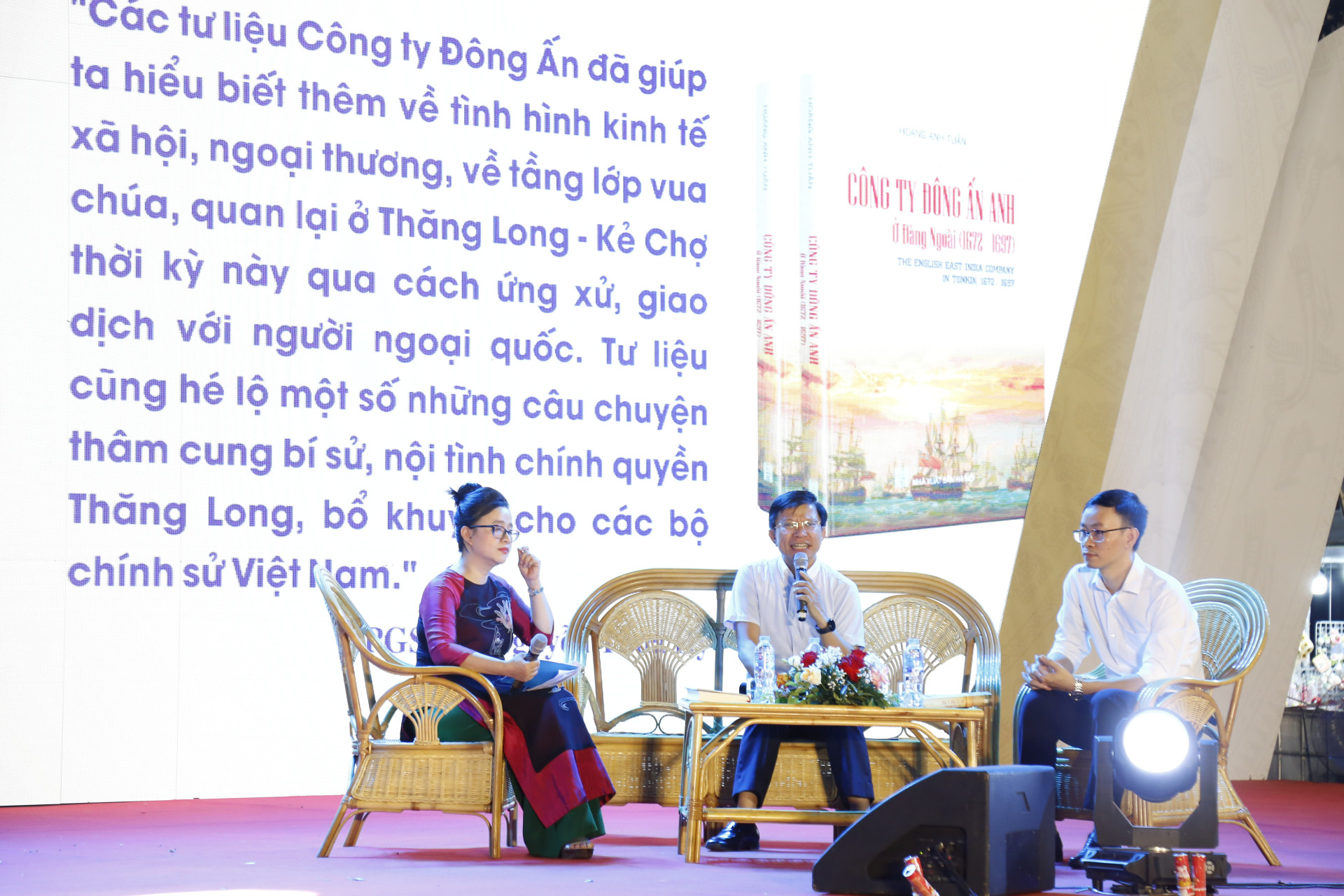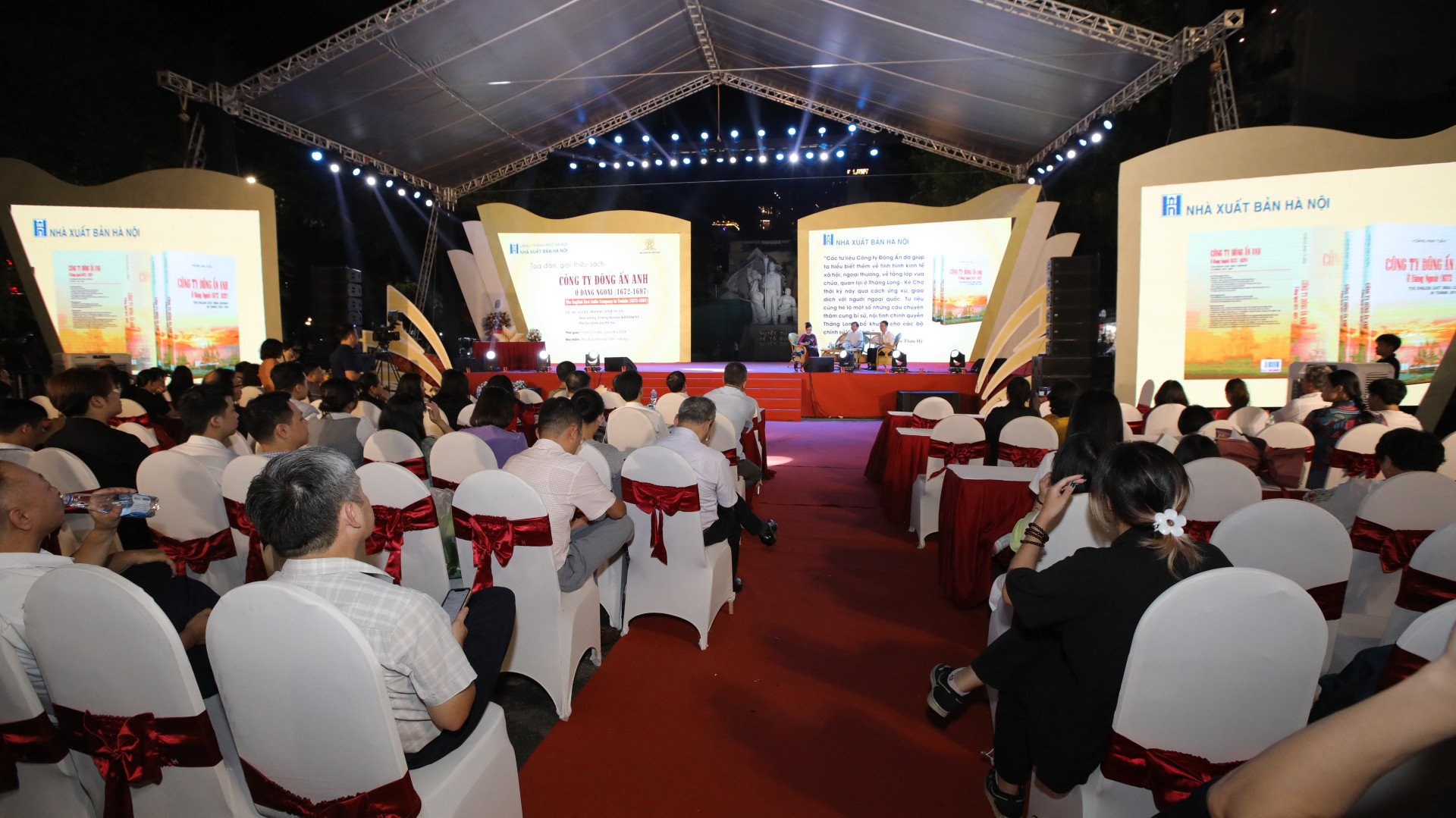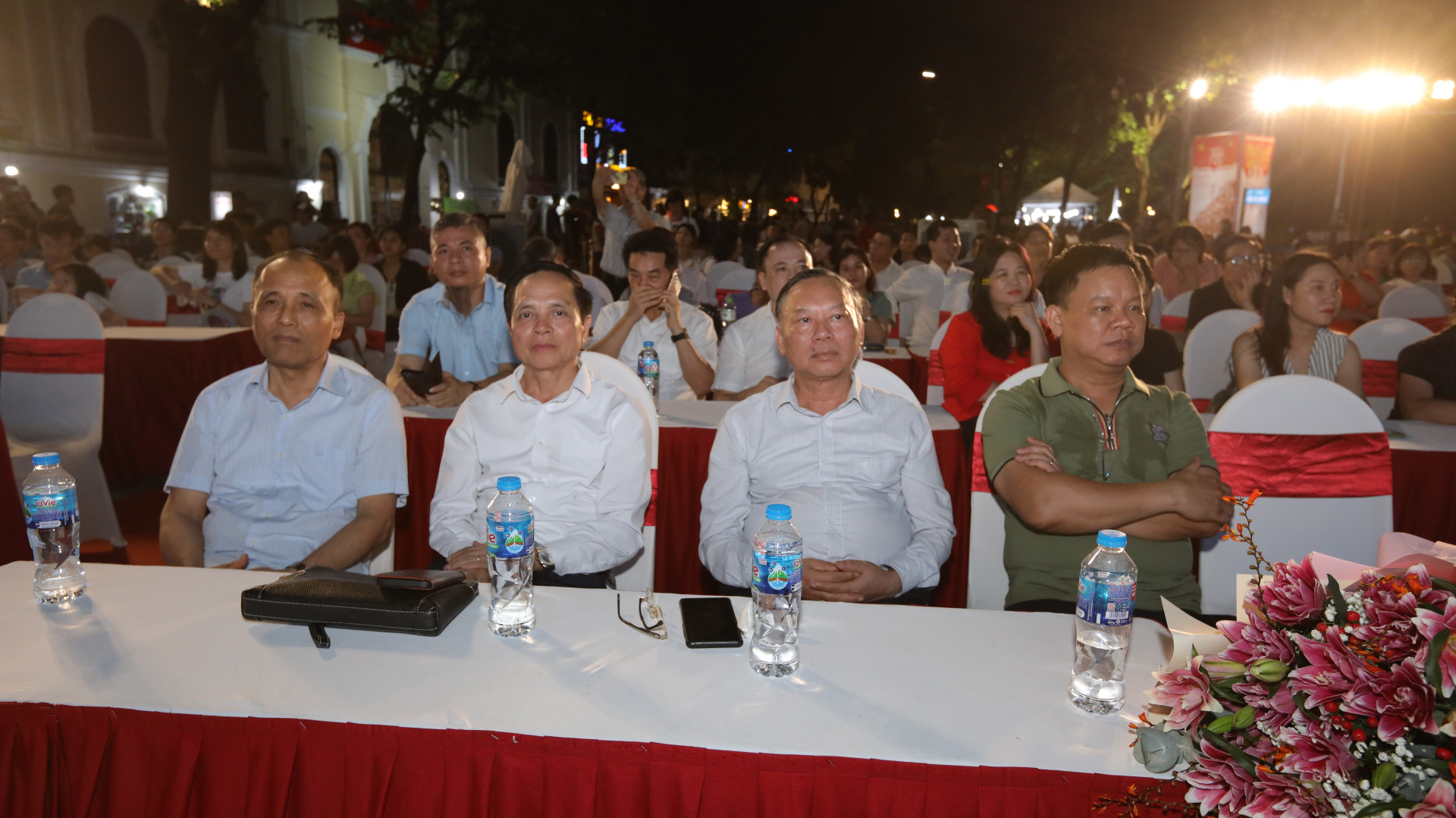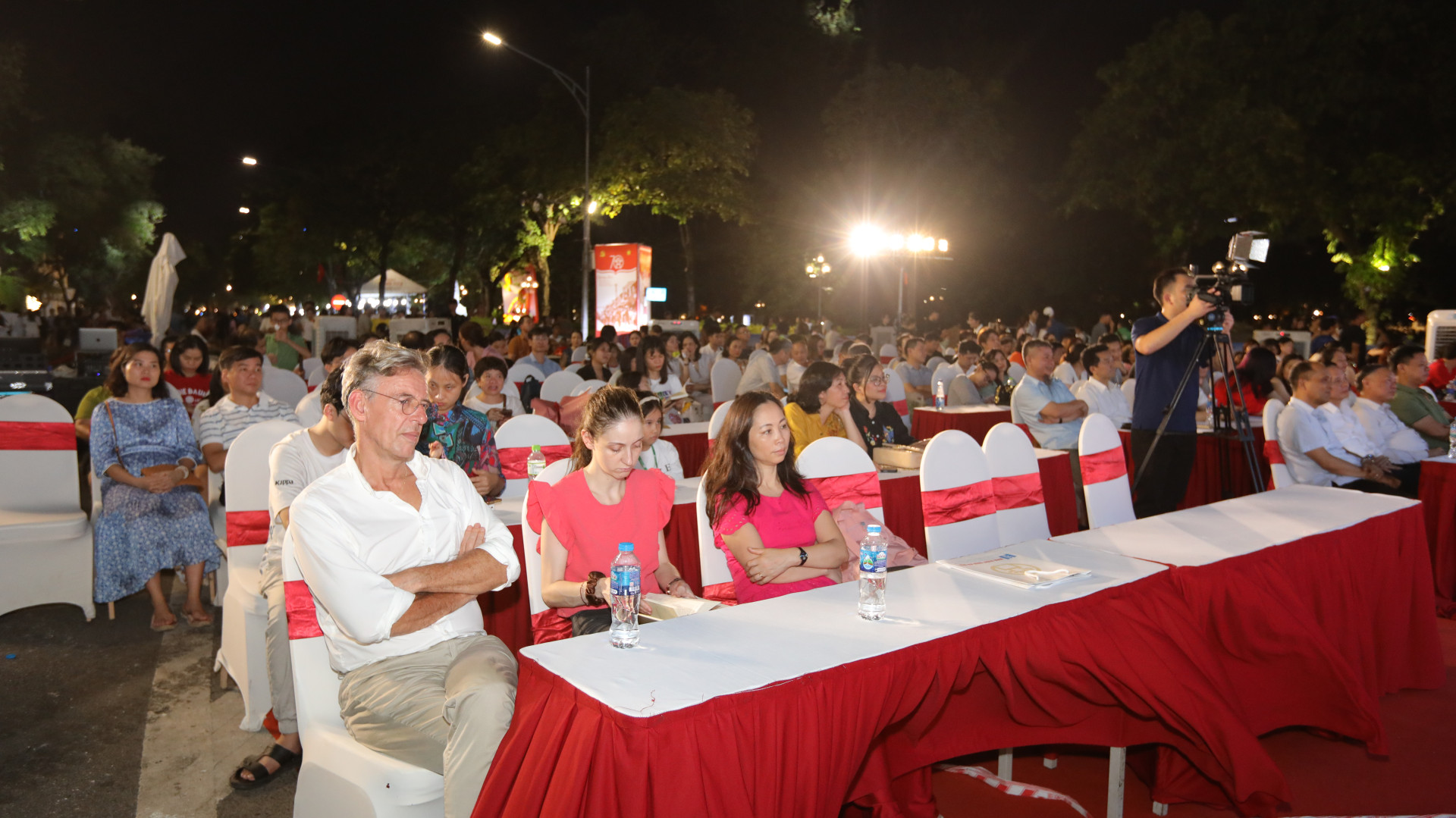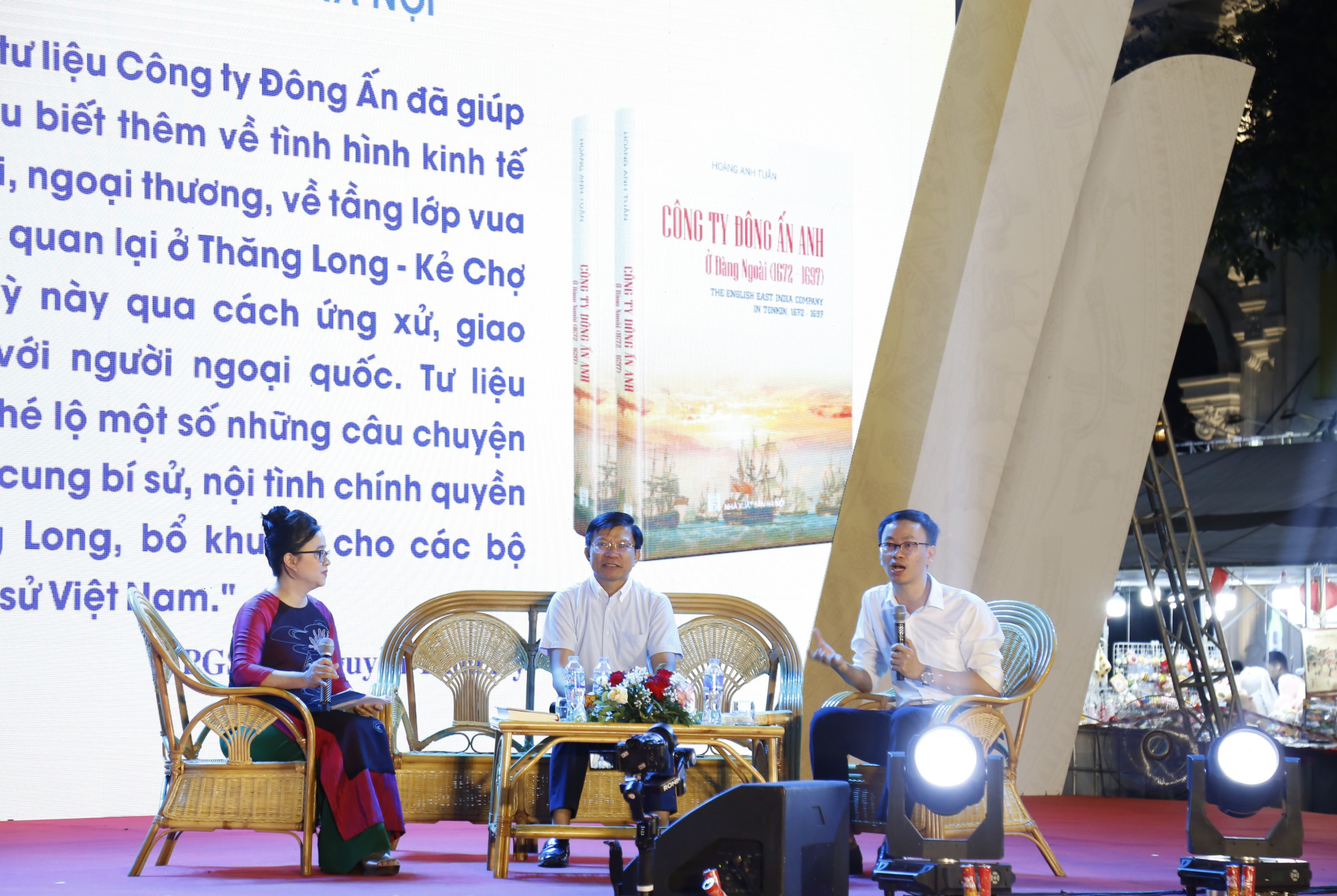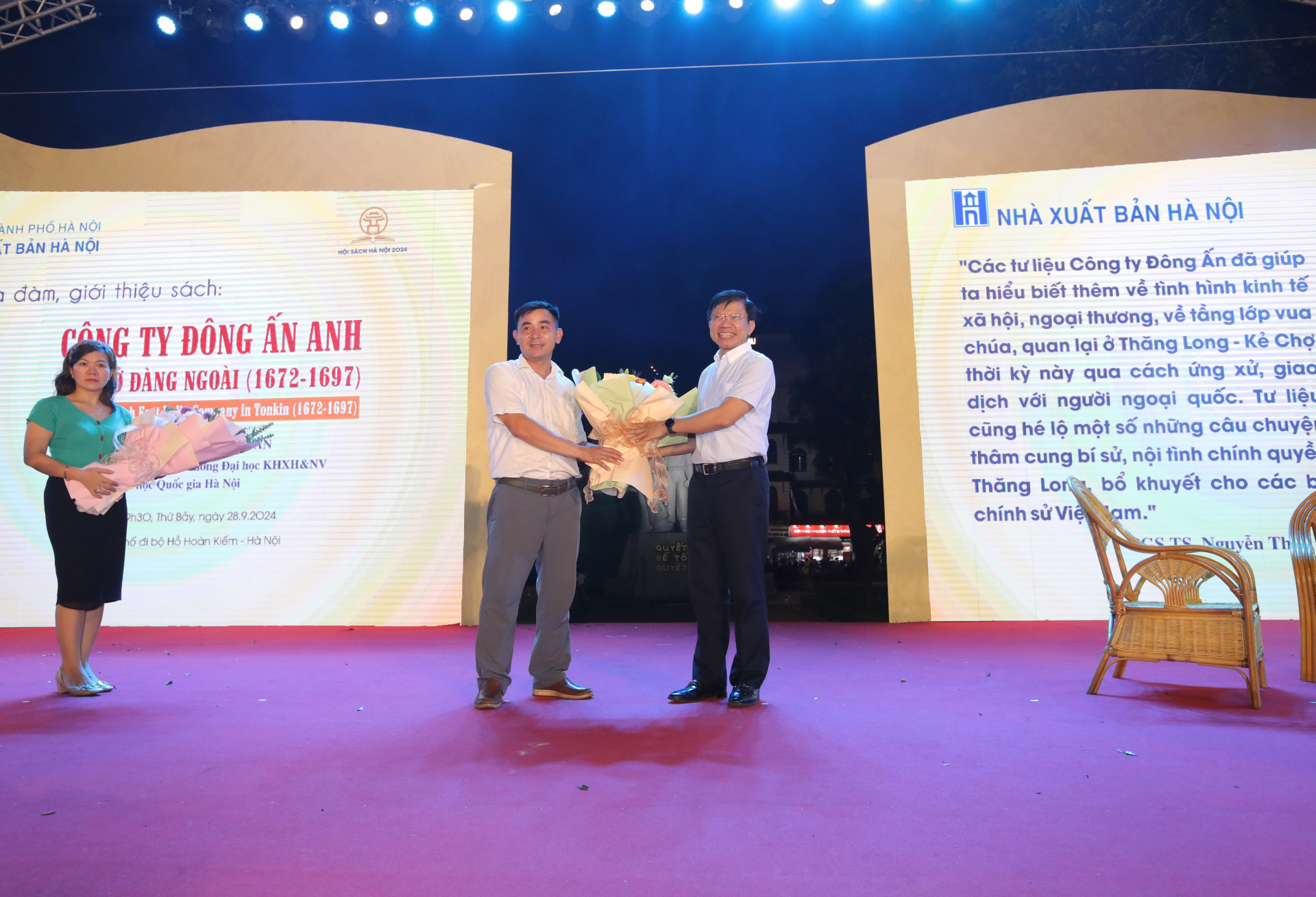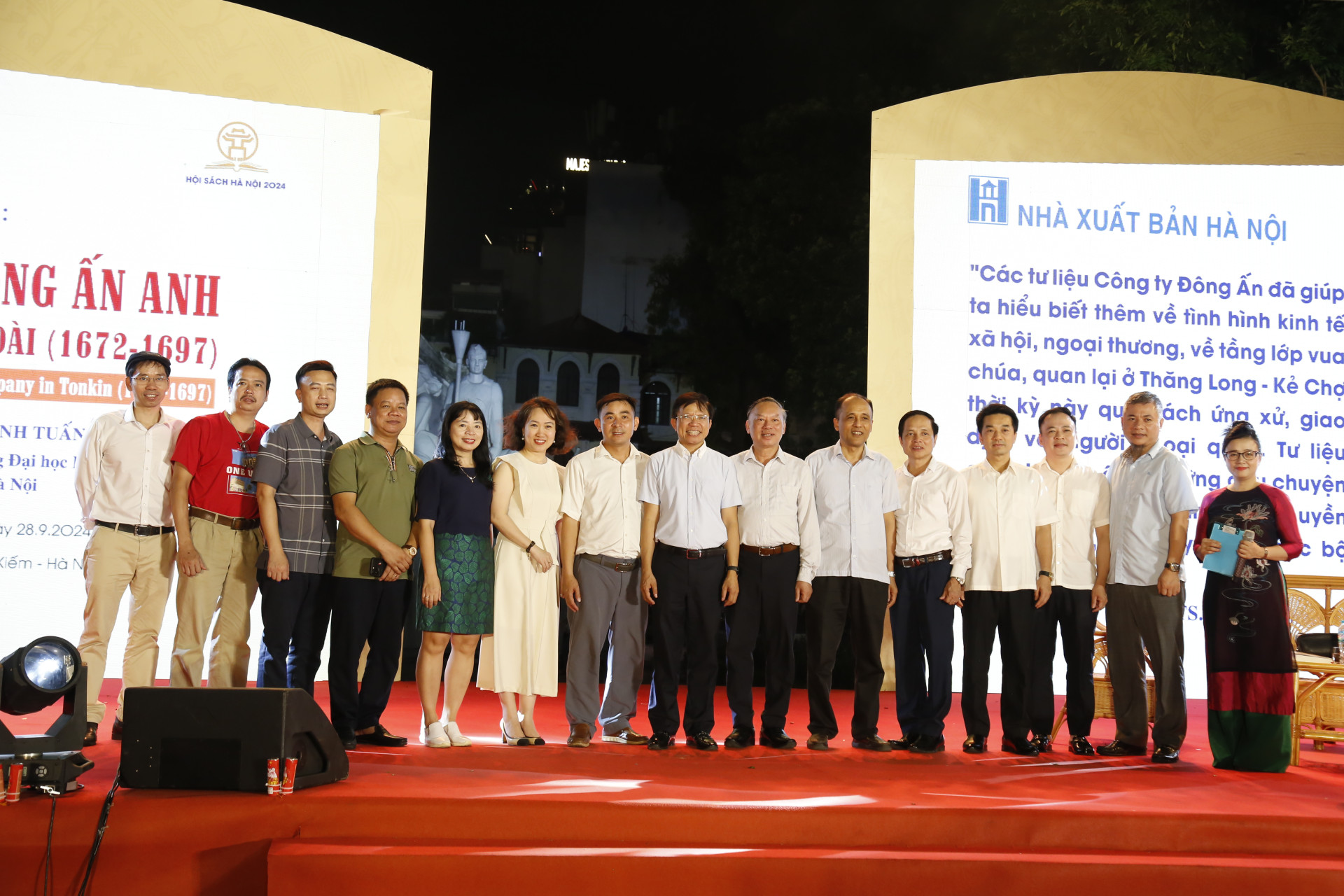The culmination of a 20-year journey of collecting and researching documents.
According to author Hoang Anh Tuan, the archival materials of the English East India Company related to Ke Cho in particular, the Kingdom of Dang Ngoai, and more broadly, the Dai Viet nation in general during the 17th century, were introduced and initially exploited by Western scholars quite early on.
From then until the last decade of the 20th century, the archives of the British East India Company were essentially not explored in depth. In the 1990s, the late Dr. Anthony Farrington of the British National Library invested time in compiling the archives of the British East India Company from 1672-1683, and published an introduction to the source materials of the British East India Company related to Pho Hien and the Northern region in the late 17th century. Regarding the occupation of Con Dao by the British East India Company from 1702-1705, author Danny Wong Tze-ken used archival materials to publish an in-depth study in 2011.
New information, along with certain advantages in terms of research cooperation in the context of national reform and integration, provides a favorable basis for domestic researchers to conduct document research and organize the exploitation of texts in the first decades of the 21st century.
Beginning with direct access to a collection of handwritten documents at the British National Library (London) in 2004, author Hoang Anh Tuan successively published several monographs introducing a portion of this collection. In 2010, within the framework of the "Thang Long - A Thousand Years of Culture" book series organized by Hanoi Publishing House, a portion of the British trading post diaries in Thang Long - Ke Cho and Dang Ngoai was extracted and introduced by the author. In 2019, several other documents (company letters, trading post reports, trading post council meeting minutes, etc.) were extracted to provide readers with new information. However, due to difficulties in accessing the documents comprehensively and the scattered nature of the source materials in various archives, some original text files have not yet been fully exploited.
Recognizing the value of this vast body of documentation, and despite facing numerous difficulties, the author, driven by a passion for research and supported by many organizations and scientists both domestically and internationally, has successfully extracted the essential content of the entire massive collection, classified and arranged it chronologically, and published a complete work to introduce it to a wide audience of researchers and readers.
Sharing about the difficulties encountered during the process, author Hoang Anh Tuan said: “All the archival documents of the British East India Company were written in Old English, with place names and personal names recorded in a very approximate way (Tonckin, Tongkin, Tongking, Tonquin, Tonqueen...; Dome, Domee, Domay...; Heen, Hein, Heine, Hean...; lings, pelings, pelangs...; hockings, hockien...; ungsja, ungja, unggia...; nhamoon, nhamones...; Dukba, Duck Ba...). The task involved transcribing and translating the handwritten Old English text from scanned copies (many pages had faded ink or were torn and moldy, resulting in incomplete information). Therefore, during the process of collecting, classifying, and annotating the documents, we acted with the utmost care, but it is inevitable that there will be some areas that are not entirely satisfactory.”
"The British East India Company in Tonkin 1672-1697" – Valuable documents for the study of medieval Vietnamese history.
In the first part of the reprinted book, author Hoang Anh Tuan briefly introduces the structure of the document collection, the classification and arrangement of documents, and the annotation of place names and proper nouns appearing in the documents. This is important information, allowing readers to gain an overview of the source materials, as well as providing necessary guidance for researchers to further explore and utilize the rich information reflected in the source materials.
The British East India Company's collection of documents concerning Kẻ Chợ - Đàng Ngoài has a relatively simple structure but is densely packed with information. The entire surviving collection consists of a business diary of the British trading posts (in Phố Hiến and Kẻ Chợ), recording daily events, interspersed with correspondence with the Company, trade reports from the trading post director (sent to Bantam, Madras, or London), resolutions of the trading post council, etc. According to the classification and arrangement of the British Library, the British East India Company's documents concerning Kẻ Chợ - Đàng Ngoài are divided into the following 10 volumes:
- G/12/17-1, Tonqueen Journall Register, December 25, 1672 - December 7, 1672, fos. 1-58.
- G/12/17-2, W. Gyfford's Journall at Tonqueen, December 13, 1672 - June 28, 1676, fos. 59-149.
- G/12/17-3, Tonqueen Journall Register, June 29, 1676 - June 26, 1677, fos. 150 - 200.
- G/12/17-4, Diary and Consultations of T. James and W. Keeling, June 6, 1677 - June 24, 1678, fos. 201 - 224.
- G/12/17-5, Tonqueen Journall Register, July 2, 1678 - May 28, 1679, fos. 225 - 251.
- G/12/17-6, Tonqueen Journall Register, June 1, 1679 - May 31, 1680, fos. 252 - 273.
- G/12/17-7, Tonqueen Letters of Consultations, December 15, 1681 - July 28, 1682, fos. 274 - 288.
- G/12/17-8, Diary and Consultations of W. Hodges, July 29, 1682 - August 26, 1683, fos. 289 - 315.
- G/12/17-9, Tonqueen Diary and Consultations, May 13, 1693 - July 29, 1697, fos. 316 - 479.
- G/12/17-10, Tonqueen Diary and Consultations, July 27, 1697 - November 30, 1697, fos. 480 - 503.
Regarding the period when trading post documents were lost (from August 26, 1683 to May 13, 1693), some relevant information can be extracted from the Java 7 archives, catalog numbers E-3-87; E-3-88; E-3-99; E-3-90; E-3-91; E-3-92. This archive is currently housed in the Office of India and the Orient (OIOC) of the British National Library (London). For several years, the business situation of the Kẻ Chợ trading post is reflected quite specifically in this Java 7 archive. These indirect sources contribute significantly to reconstructing the overall picture of the activities of the British East India Company in Kẻ Chợ - Đàng Ngoài during the period 1672 - 1697.
|
|
|
A page from the "Diary of an English Merchant in Tonkin" contains a brief translation of its contents as follows:
- November 1, 1694: A good quality rope was obtained, 9 inches longer than expected, approximately 95 fathoms, and it was believed to be sufficient for the Pearl.
At night, the Dutch director and his staff went down to the river mouth by boat.
Ungja Tack visited the English trading post and offered him tea and jam. He requested that the company send him amber and some small birds, which, from his description, we guessed were what the Muslims call Moonet. We wanted to ask about the leaves.The (British) flag was burned, but he said he wouldn't dare report it to the Lord until he had spoken with the Governor.
- November 2, 1694: The Chubu interpreter brought the supplies, but we couldn't accept them because the quality was too poor. That night, Mr. Blackmore and Mr. Warren went down to the ship in a small boat.
- November 4, 1694: At noon, Director Richard Watts and Mr. Warren traveled by land to the ship. Yesterday, Domingo had accompanied Mr. Farmer and Mr. Blackmore to the ship. The Director requested them to stop in Pho Hien to protest to the Governor about the flag incident…
Source: British National Library (L)London - United Kingdom
|
Based on the structure of the document collection, the information extraction is essentially based on the current structure of the documents held at the British National Library in London. The documents are arranged chronologically. The book's content is primarily an excerpt of the main contents of the trading post's diary, incorporating the diary itself and some related documents such as resolutions of the trading post's council, correspondence between the management and staff, petitions from the trading post to Lord Trinh and officials in Dang Ngoai (Northern Vietnam)...
The book launch seminar for "The British East India Company in Tonkin (1672-1697)" by author Hoang Anh Tuan attracted considerable attention from scientists, researchers, lecturers, students, and book lovers.
During a discussion at the book launch seminar for Professor Hoang Anh Tuan, Dr. Tran Ngoc Dung (currently working at the Institute of International Relations, Ho Chi Minh National Academy of Politics), one of the leading experts researching archival documents of the British and Dutch East India Companies, expressed his admiration and appreciation for the diligent scientific work of Professor Hoang Anh Tuan, who spent 20 years meticulously collecting and translating the archival documents of the British East India Company in Tonkin from 1672-1697. In this edition, the author, together with Hanoi Publishing House, has reviewed and edited the information, further supplementing research results to provide readers with a relatively comprehensive and up-to-date study of Tonkin during the latter half of the 17th century. This is a meticulously and carefully compiled document of great reference value for researchers studying Vietnamese history in the 17th century in many fields: politics, diplomatic relations, economic life, culture, society, international trade, etc.
Regarding the value of the documents introduced by author Hoang Anh Tuan in the book "The British East India Company in Tonkin 1672-1697," Associate Professor Dr. Nguyen Thua Hy shared: "The documents from the East India Company have helped us to better understand the socio-economic situation, foreign trade, and the class of kings and officials in Thang Long - Ke Cho during this period through their behavior and transactions with foreigners. The documents also reveal some secret stories and internal affairs of the Thang Long government, supplementing the official histories of Vietnam."
At the book launch, author Hoang Anh Tuan expressed his deep gratitude to all the scientists, both domestic and international, and colleagues who provided professional support during the manuscript development and editing; he also thanked Hanoi Publishing House for their partnership in publishing the book and bringing it to readers. Hoang Anh Tuan also hoped that researchers, especially young researchers, would consider the book as a suggestion and inspiration to further research the rich and multifaceted values of this source material, as well as many other valuable documents stored at the Vietnam Cultural Documentation Center, part of the University of Social Sciences and Humanities, Vietnam National University, Hanoi. These overseas sources are truly national assets, possessing not only intrinsic scientific value reflecting a wealth of information about the politics, economics, and society of past historical periods, but also immense value in the development and protection of the nation in the modern era.
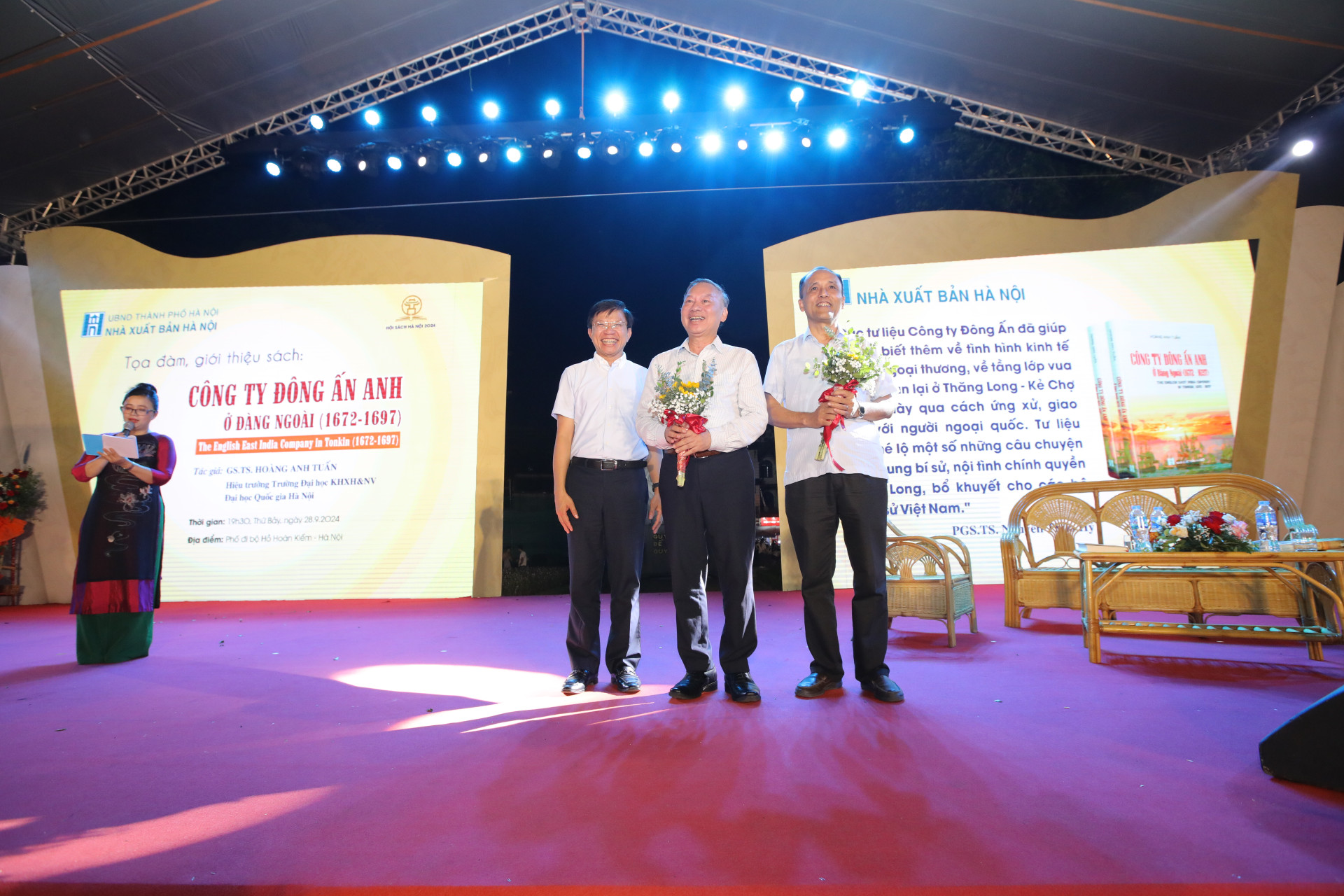
Author Hoang Anh Tuan presents flowers to express his gratitude to Professor Nguyen Quang Ngoc and Associate Professor Vu Van Quan - respected teachers who have always supported, encouraged, and provided the author with valuable guidance throughout his scientific research and in completing this book.
Representatives from Hanoi Publishing House presented flowers to congratulate the author.
Representatives from Hanoi Publishing House, along with leaders and faculty members from the University of Social Sciences and Humanities, congratulated and took commemorative photos with author Hoang Anh Tuan on the occasion of the book launch.

